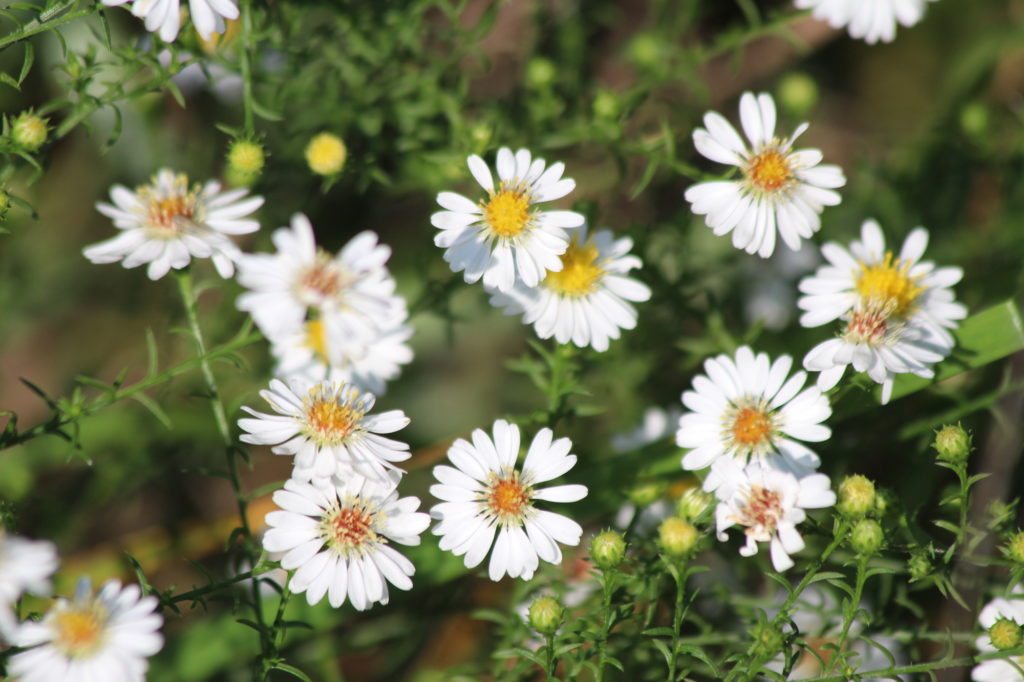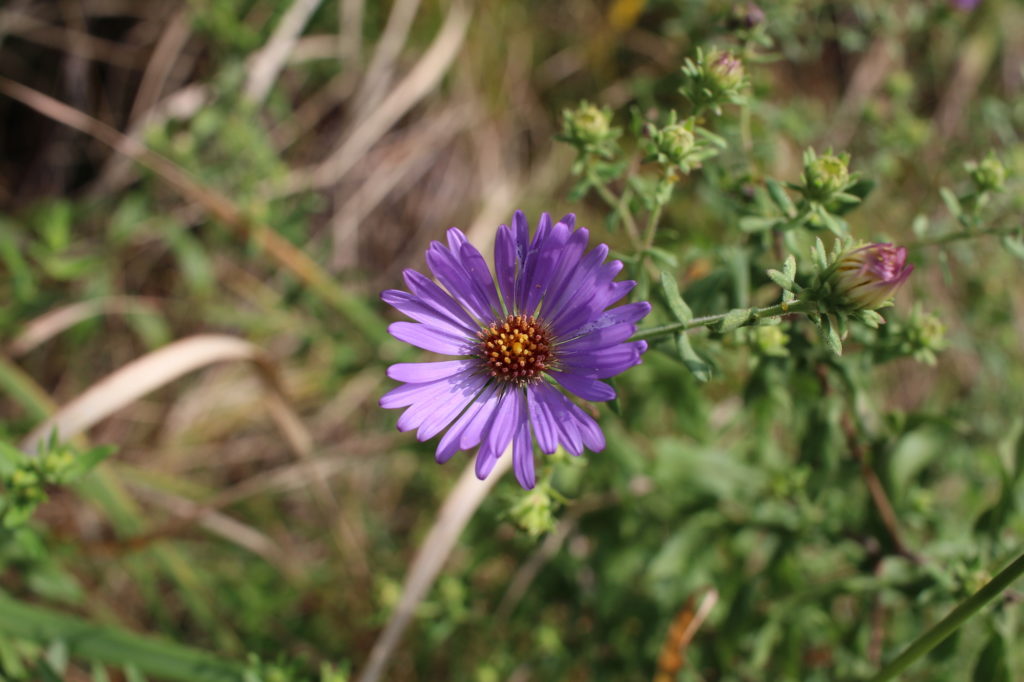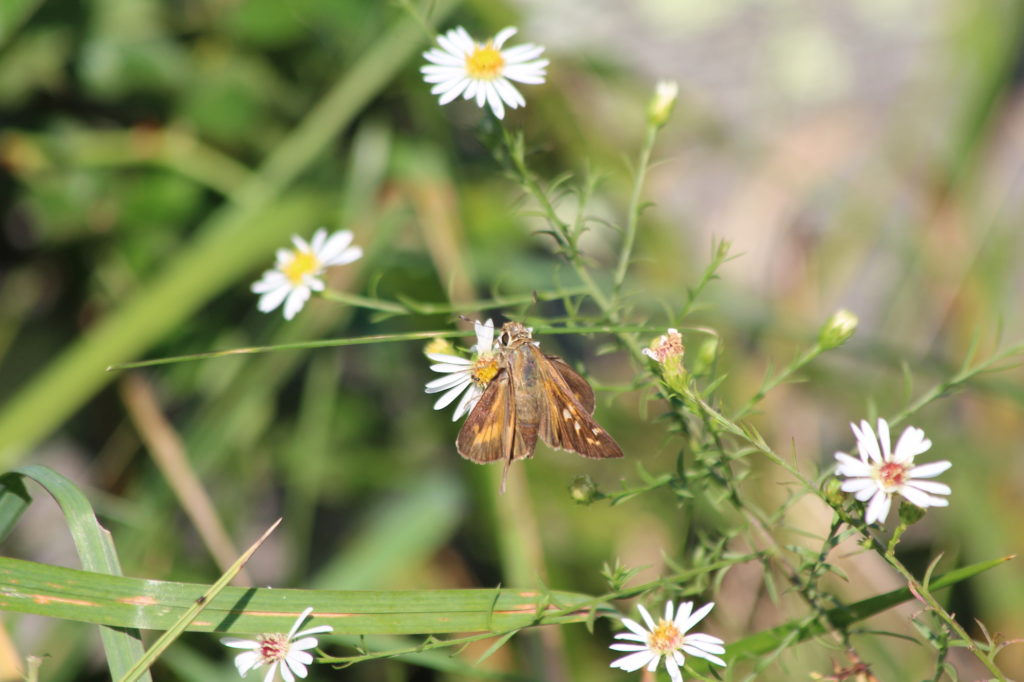
What’s in Bloom | American Asters
October 13, 2020
American asters (Symphyotrichum spp.) are blooming throughout Virginia and provide important late-season resources to pollinators as we move into Autumn. There are almost 30 different Symphyotrichum species native to Virginia and many can be somewhat tricky to tell apart. They all have alternate leaves, some are annuals and many are perennials, and they all have the recognizable ray and disk (daisy-like) florets characteristic of the flowers of the aster family.
Flowering colors range from white to pink and purple depending on the species. Asters can be found in a wide range of habitats, again depending on species some prefer drier soils and high elevations and others can be found in wetter, swampier conditions. We provide several photographs of different species below.
Benefits to Biodiversity | American asters are some of the last species to be used by pollinating insects and will have seeds available to wildlife throughout the winter. Every pollinator garden and landscape should include late season resources and these are a top choice to include not only for their benefits but also for their beauty and high abundance of blooms.
White Old Field Aster, (pictured in two images above) also known as White Heath Aster, (Symphyotrichum pilosum) is a native perennial warm season forb (wildflower) from 2-4 feet tall that is beginning to bloom right now in southeastern Virginia, and occurs throughout Virginia. It is adapted to moist, well-drained and droughty soils. It is not adapted to poorly-drained soils.

S. oblongifolium growing wild in Shenandoah National Park 
S. oblongifolium growing in a pollinator garden
Aromatic aster, S. oblongifolium (pictured above), is a lovely purple aster that is native to the mountain region in Virginia. It is most frequently found in dry rocky woodlands, barrens, cliffs and outcrops. It is rarely found in the Piedmont region although it is a common choice in pollinator gardens for its abundance of late-season blooms.
Sources: Flora of Virginia, content on S. pilosum contributed by Bob Glennon, NRCS
